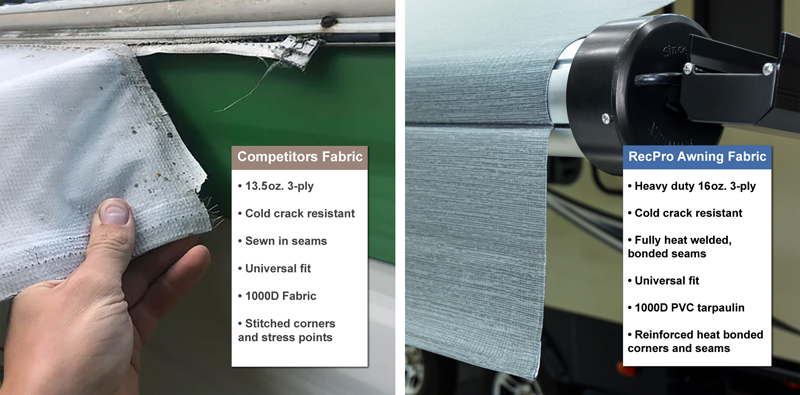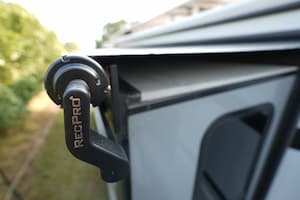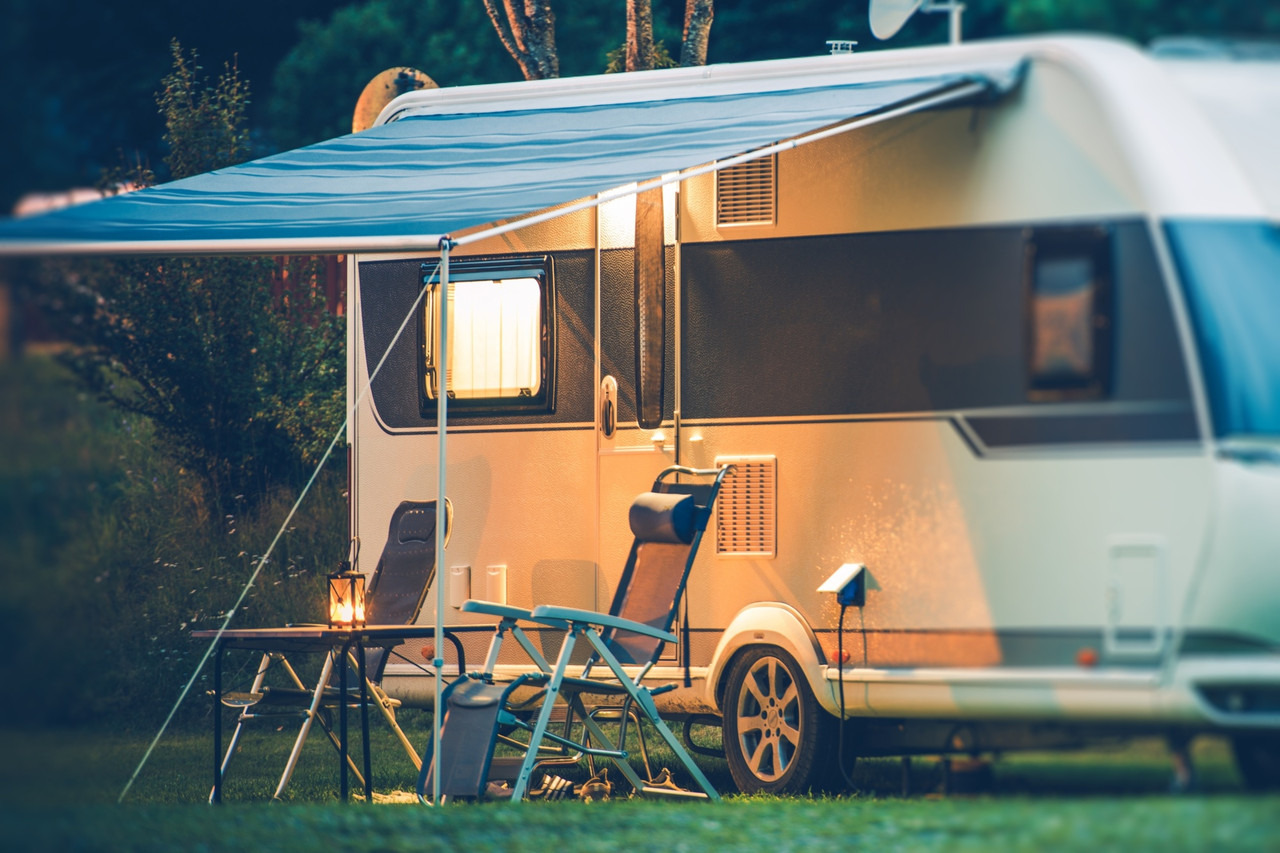Our quality RV and trailer awnings provide you and your family or friends with wind, rain, and sun protection against harmful UV rays so you can make the most of outdoor living by further expanding your living space and improving the look of your RV or fifth wheel travel trailer. But before you buy, check out the different types of awnings we offer, learn how to find the right awning for your recreational vehicle, and learn how to care for your new or existing awning. We'll also review a few frequently asked questions so you can make an educated decision when choosing the best RV awning for your rig.
Manual Awnings
![awning in awning in]() This retractable awning style requires some elbow grease, as the RV awning arms retract and extend manually. So why should you choose a manual awning? Manual retractable RV awnings are often less expensive than electric awnings, making them a great DIY project for people who want to improve the looks of their RV, fifth-wheel camper trailer, or camper van while on a budget. Manual RV awnings are also simpler in design, as they don't feature wires or motors, making them lighter and easier to install
This retractable awning style requires some elbow grease, as the RV awning arms retract and extend manually. So why should you choose a manual awning? Manual retractable RV awnings are often less expensive than electric awnings, making them a great DIY project for people who want to improve the looks of their RV, fifth-wheel camper trailer, or camper van while on a budget. Manual RV awnings are also simpler in design, as they don't feature wires or motors, making them lighter and easier to install
Electric Awnings
Electric awnings, also called powered or automatic awnings, are an excellent choice for RV owners who want to maximize convenience during camping trips and control their living area. Electric awnings use electricity to power motors inside the awning rollers, allowing you to extend or retract your awning with a push of a button instead of a crank handle. This lets you precisely control how far the awning extends, giving you more control over shade and water runoff protection from outdoor elements like the sun, wind, snow, and rain. Electric awnings are also designed to keep the awning fabric at the proper tension at all times, whether extended fully or halfway. This also helps prevent accidental damage when extending or retracting the awning.
Slide-out Awnings
Slide-out awnings, also known as slide-out toppers or slide-topper awnings, differ slightly from your typical camping trailer awning. A slide-out awning doesn't provide shade like a typical RV awning or extend when the slide-out isn't extended. Slide-out toppers are designed to cover the top of an RV slide-out and keep out any water, dirt, or other elements that could get into the slide from above. This, in turn, keeps the RV slide out in good condition and operating smoothly. It also means RV owners won't need to climb to the top of their slide-out and clean it before setting camp.
![awning out awning out]()
How to Choose the Right RV Awning
So, now that you know the basic differences between different awning types, how do you choose the right one for your RV camper trailer? Here are a few things to consider.
Size Considerations
Before you shop for RV awnings, you should determine what size awning you'll need. The size you'll need will depend entirely on your specific RV camper trailer. Each recreational vehicle is designed differently and can have vastly different layouts, even if it's the same model.
Material Considerations
If you've got the size you need in mind, then the next step is to consider your awning fabric choices. You'll have a lot of variety here, but some options are superior. Most awning brands will use awning materials like vinyl fabric or acrylic fabric, which offer great advantages such as resistance to mold and mildew. However, these materials are often less resilient, with vinyl fabric usually lasting between 5 and 7 years and acrylic fabric lacking water resistance.
At RecPro, we use 1000D PVC Tarpaulin for our RV awning replacement fabric. This fabric comes standard in our selection of RV awning models, so you get a complete kit of robust RecPro awning hardware and RV awning fabric. Furthermore, our RV awning fabric replacements are available in several great color options: Solid White, Solid Black, Ocean Blue Fade, Tan Fade (a light brown fade), Gray Fade, Slate Blue Fade, Burgundy Fade, and Charcoal Fade.
![RecPro awning fabric comparison RecPro awning fabric comparison]()
RV Awnings FAQ
![slide out topper slide out topper]()
What Types Of RV Awnings Are Available?
How Long Do RV Awnings Last?
Most awnings will last 5 to 10 years with proper care. The lifespan of your awning depends on factors such as:
- The type of awning materials used in the fabric
- How often do you use your awning
- How long the awning is exposed the sun and harsh weather
- How often the awning is cleaned and maintained
- If you leave your awning extended or retracted when storing your RV
What Are RV Awnings Made Of?
Most awning fabrics are made from vinyl or acrylic fabric. RecPro awning fabrics are made from 1000D PVC Tarpaulin with a strong aluminum frame.
Can I Replace The Awning Fabric Only?
Yes, you can replace the fabric of your awning without purchasing a whole new awning system, which will save you money. You can find RecPro's selection of replacement awning fabric here.
How Do I Clean My RV Awning?
Clean your awning and the awning fabric using:
- Mild soap
- A soft brush or cloth
- A water hose (Do not use a pressure washer)
Rinse the awning and awning fabric thoroughly after washing. Leave the awning fully extended and allow it to dry completely before retracting to avoid mold or mildew growth.
Why Does My RV Awning Sag?
Common reasons for sagging include:
- Water pooling on the fabric
- Inadequate tension on the awning fabric
- Loose or worn tension springs in the awning roller tube
- Fabric stretching or wearing out over time
Can I Use My Awning In The Rain Or Wind?
It is usually okay to use your RV awning in light rain. You should avoid using your RV awning during heavy rain, high winds, and storms, as the awning can bend or the fabric may rip in harsh weather conditions.
How Do I Stop Water From Pooling On My Awning?
Adjust the pitch of your awning to one side so that the water will run off instead of pooling in the middle.
Do RecPro RV Awnings Come With A Warranty?
Yes, RecPro RV Awnings come with a 1-year warranty on the awning frame that covers manufacturer defects, and a 5-year warranty on awning replacement fabric. You can find more information on our warranty policy here.
Can I Install An RV Awning By Myself?
Yes, you can install an RV awning yourself, so it's perfect for a DIY project. However, it can be difficult, so it is recommended that you have someone help you out
Why Won't My Electric Awning Open Or Close?
Common reasons for an electric awning failing to open or close include:
- A blown fuse
- A low RV battery
- A faulty motor
- Bent or damaged awning arms
- Loose wiring
Can I Add Lights Or Accessories To My Awning?
Yes. RecPro offers a variety of awning accessories to customize your awning with, including:
How Do I Measure For An RV Awning?
In general, you can measure the length of your RV roof from the rear to the front or where the roof begins to slope downward and use that measurement to determine the right size awning for you. You can also choose an awning shorter than that length; just make sure that the awning components, such as the arms, will not interfere with other parts of your RV, such as windows and doors.
Choosing the Best RV Awning for Your Needs
Comfortable outdoor living can be a challenge, even in an RV. But that doesn't mean you can't make your next camping trip better. RecPro is here to help you with all your awning needs, whether you need replacement parts and accessories for an existing awning or a complete kit. Take advantage of our free shipping, superb customer service, and wide selection of RV awnings today!
Related Blog Posts
-
RV awnings are an essential addition to any recreational vehicle, providing shade, shelter, and added living space while on the road …
-
Awnings are great for expanding your camper’s livable space by extending sun and rain coverage to the area right outside your rig …
-
RV camping in the summer is a blast, but do you ever find yourself getting beat down by the heat …

 $51.95
$51.95




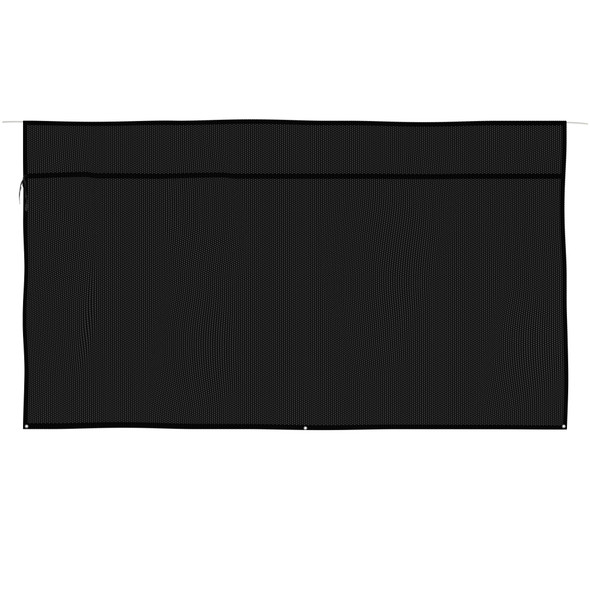








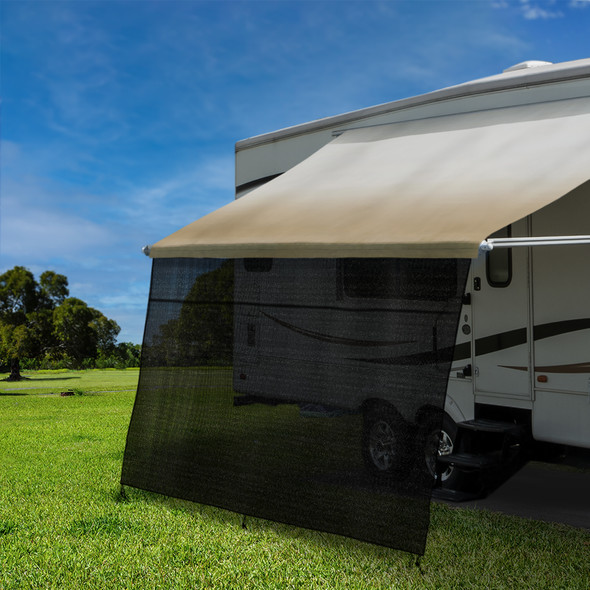
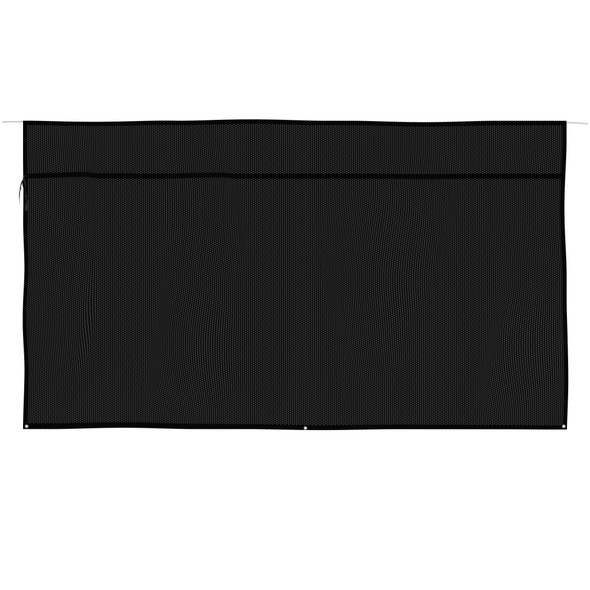



 $109.95
$109.95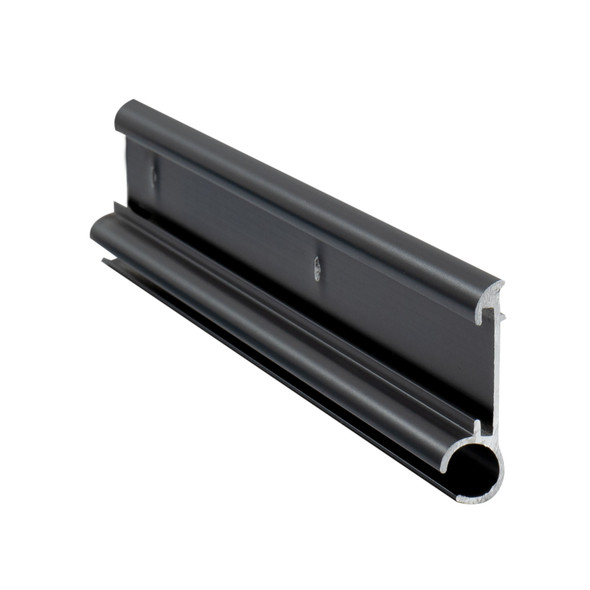
 $99.95
$99.95
 $89.95
$89.95
 $12.95
$12.95
 $17.95
$17.95
 $12.95
$12.95
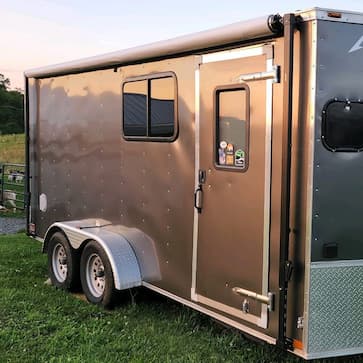 This retractable awning style requires some elbow grease, as the RV awning arms retract and extend manually. So why should you choose a manual awning? Manual retractable RV awnings are often less expensive than electric awnings, making them a great DIY project for people who want to improve the looks of their RV, fifth-wheel camper trailer, or camper van while on a budget. Manual RV awnings are also simpler in design, as they don't feature wires or motors, making them lighter and easier to install
This retractable awning style requires some elbow grease, as the RV awning arms retract and extend manually. So why should you choose a manual awning? Manual retractable RV awnings are often less expensive than electric awnings, making them a great DIY project for people who want to improve the looks of their RV, fifth-wheel camper trailer, or camper van while on a budget. Manual RV awnings are also simpler in design, as they don't feature wires or motors, making them lighter and easier to install
